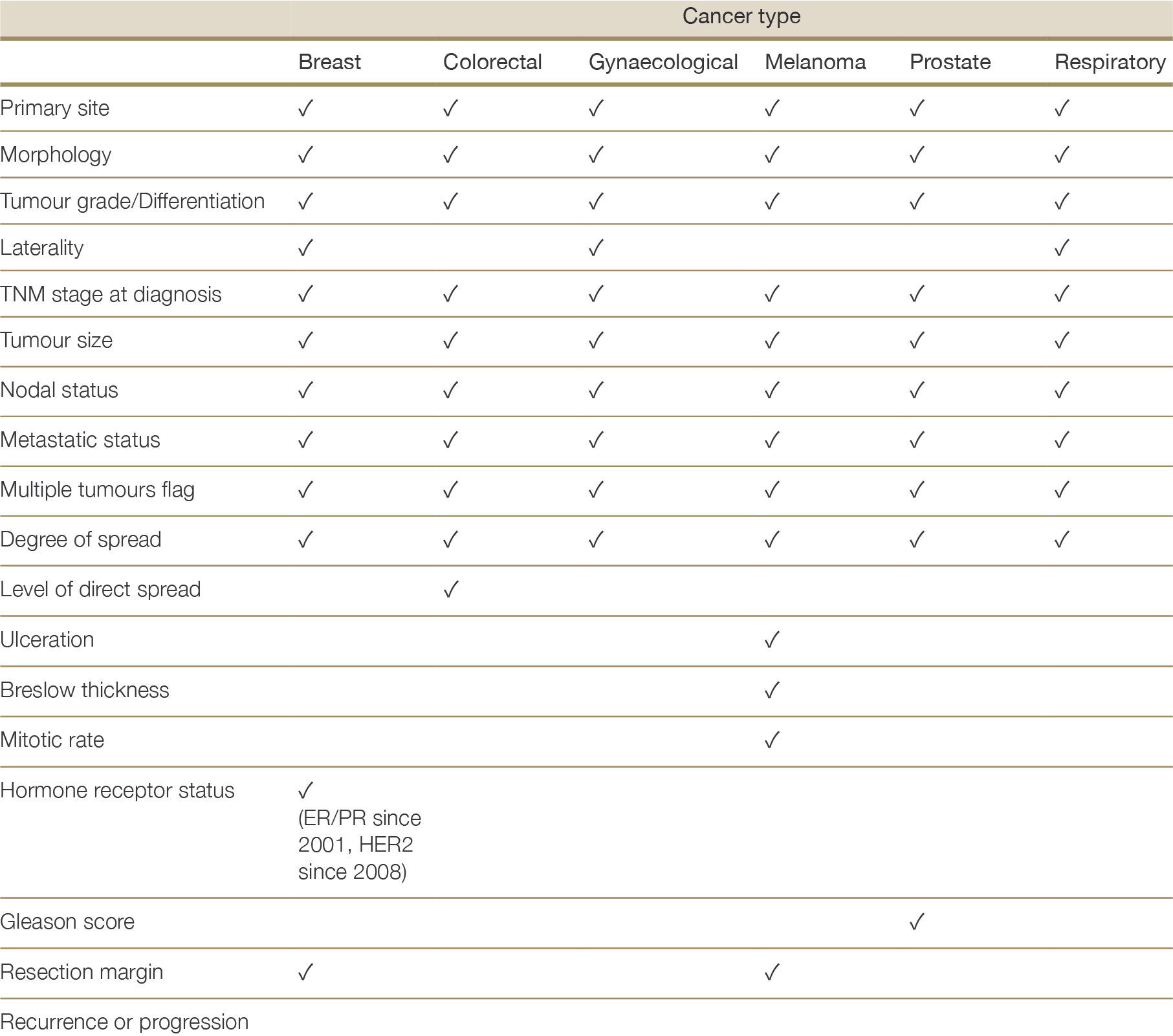Appendix L
Information on Australian and New Zealand cancer registries
Australia
Cancer is a notifiable disease in Australia under the Public Health Act or equivalent in each state and territory. As a result, operational and governance arrangements vary; however, the Australian Association of Cancer Registries encourages a standard approach to cancer data collection and management across Australia.
Each state and territory operates a cancer registry that assembles information about new cases of cancer and cancer deaths. Data are supplied to the registries from a range of sources, such as hospitals, pathology laboratories, radiotherapy centres and the registrars of births, deaths and marriages—though mandated notifiers and the breadth of data collected vary between jurisdictions (Table L1). All registries record location, morphological type, topography, diagnosis date, grade and basis of diagnosis.
The registries are “case-based” data collections: Each piece of information provided to the registry is considered in the context of other information about the same person and used to progressively create a complete picture of tumours for that person. This differs from standard event-based data collections where each episode is coded in isolation. Cases are generally identified by Name, Sex and Date of Birth. In most jurisdictions, this is regularly validated within the jurisdiction against electoral rolls to improve data accuracy and reduce duplicate entries.
The cancer registries’ responsibilities are local: they supply information for use by their state or territory for planning of services, estimation of survival rates and treatment evaluation. Cancer data are also available for use in epidemiological studies.
Arrangements exist in some jurisdictions (see Section 2.4.2.6 ) for DonateLife staff to query the state-based registry (either directly or indirectly) to obtain the history of a potential donor once appropriate consent for donation is obtained from the next of kin. However, information from the registry is limited to those cancers diagnosed or treated within that state or territory and is identified primarily by name and date of birth. In order to obtain a complete history, it is important to ascertain if the donor previously resided in a different state or territory, and/or may have been diagnosed or treated under a different name. Where the potential donor resided in another jurisdiction, contact DonateLife staff in that jurisdiction to proceed with further enquires.
The registries forward an agreed list of data elements to the Australian Institute of Health and Welfare (AIHW) annually to a national repository—the Australian Cancer Database—for national reporting and disease monitoring. National de-duplication and cross-border case resolution is undertaken annually by the AIHW in the preparation of the annual reporting database. Availability of jurisdictional data to the Australian Cancer Database is usually around 1-3 years after diagnosis. This data collection is not available for interrogation to obtain the malignancy history of a potential donor.
Table L1: Data providers to state and territory cancer registries

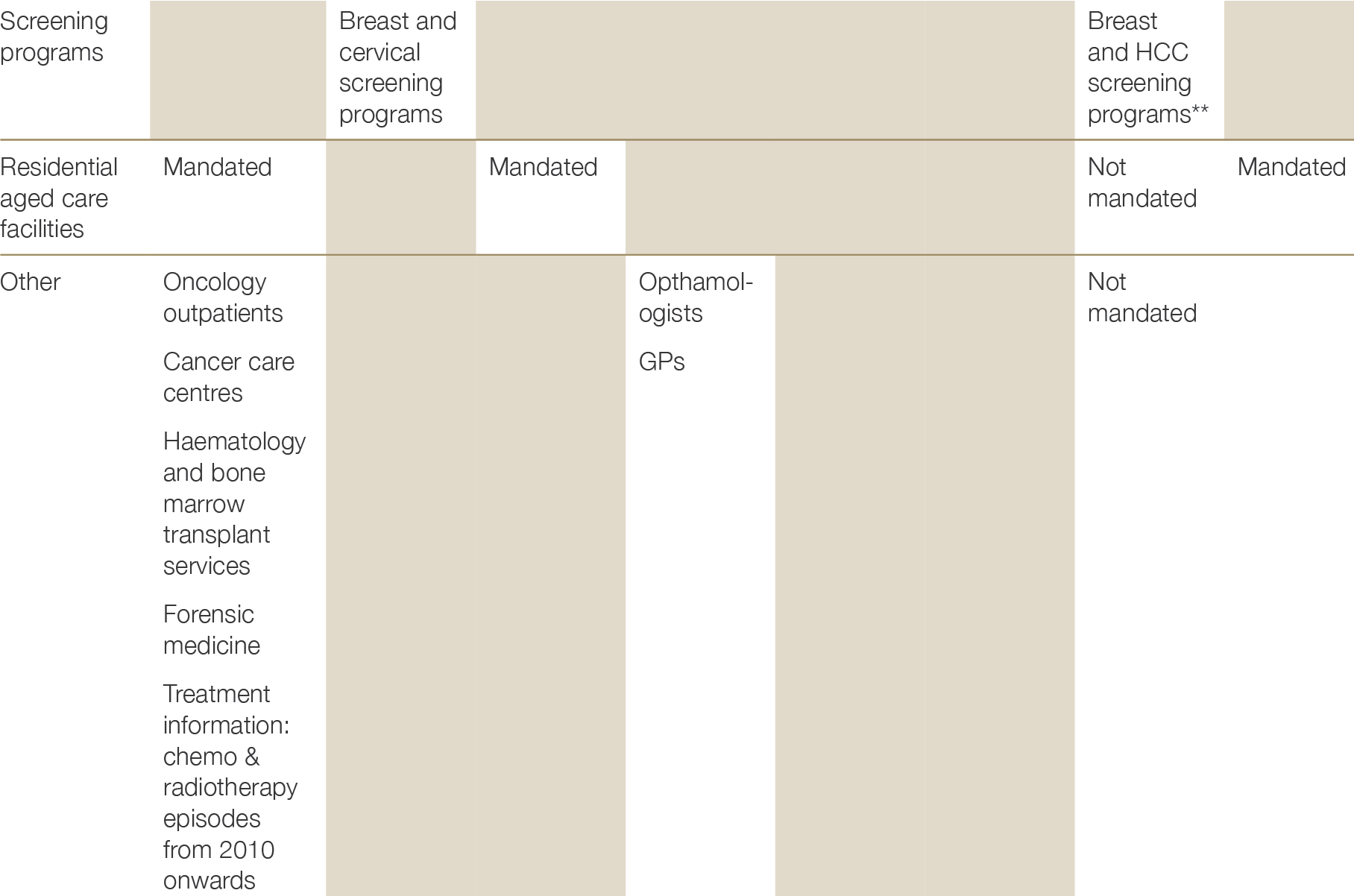
* A lot of information is captured on the pathology report, the inpatient notification (surgical) or on the radiotherapy/chemotherapy treatment notification, which may not be explicitly listed in a data field.
** Annual ascertainment with BreastScreen NT and Hepatobiliary Multi-Disciplinary Teams (HCC surveillance)
Table L2: Cancer-specific information available in state and territory cancer registries
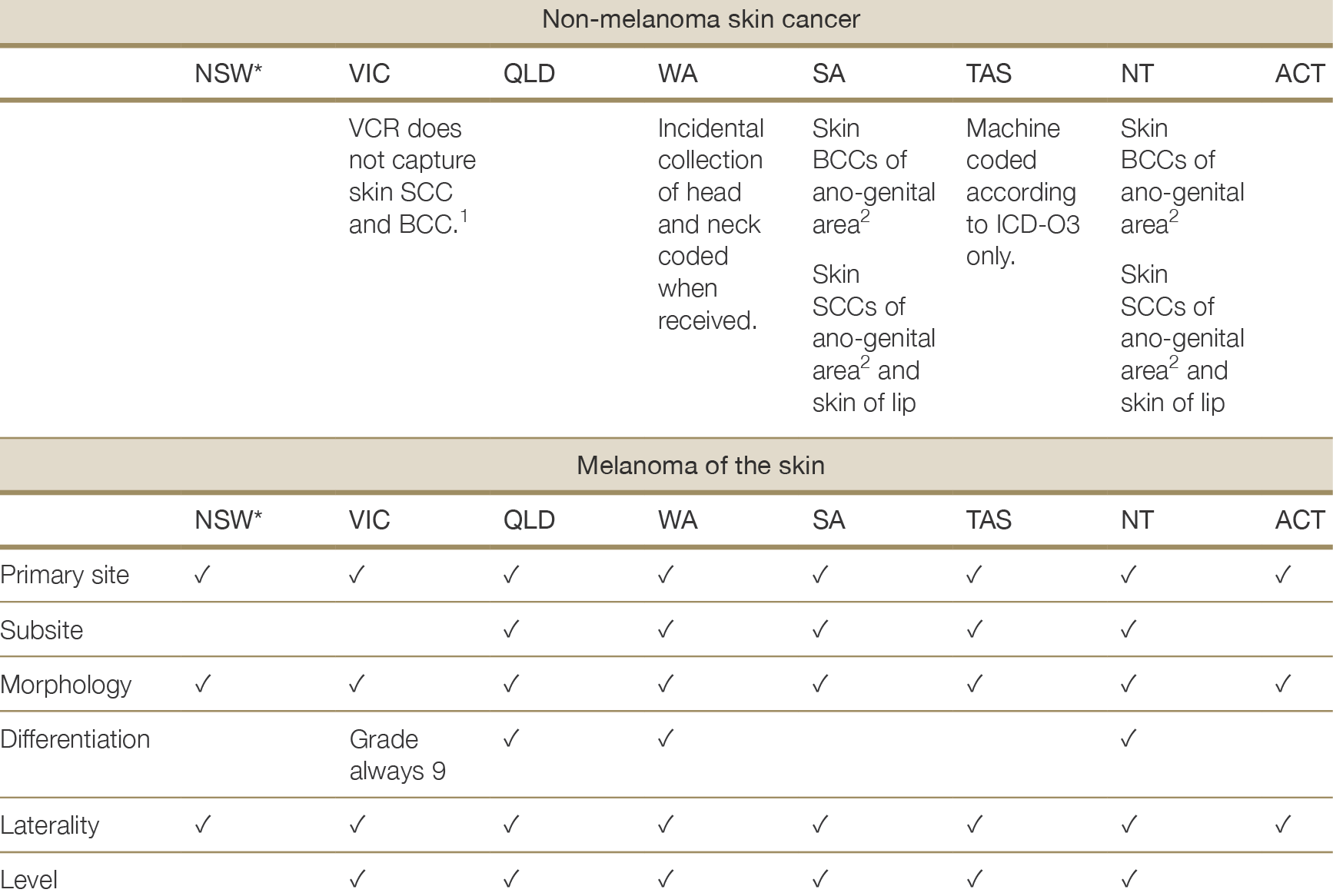
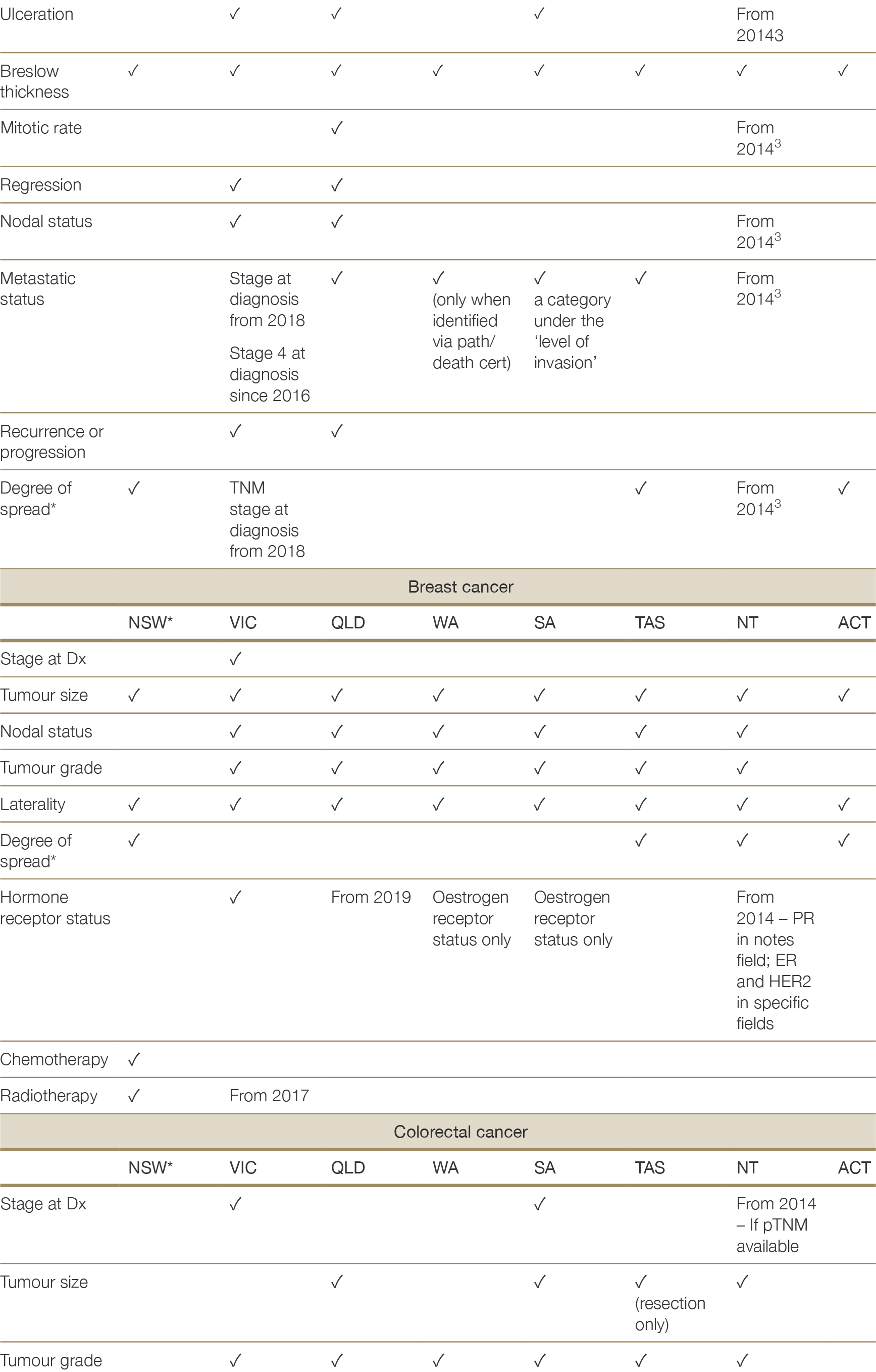
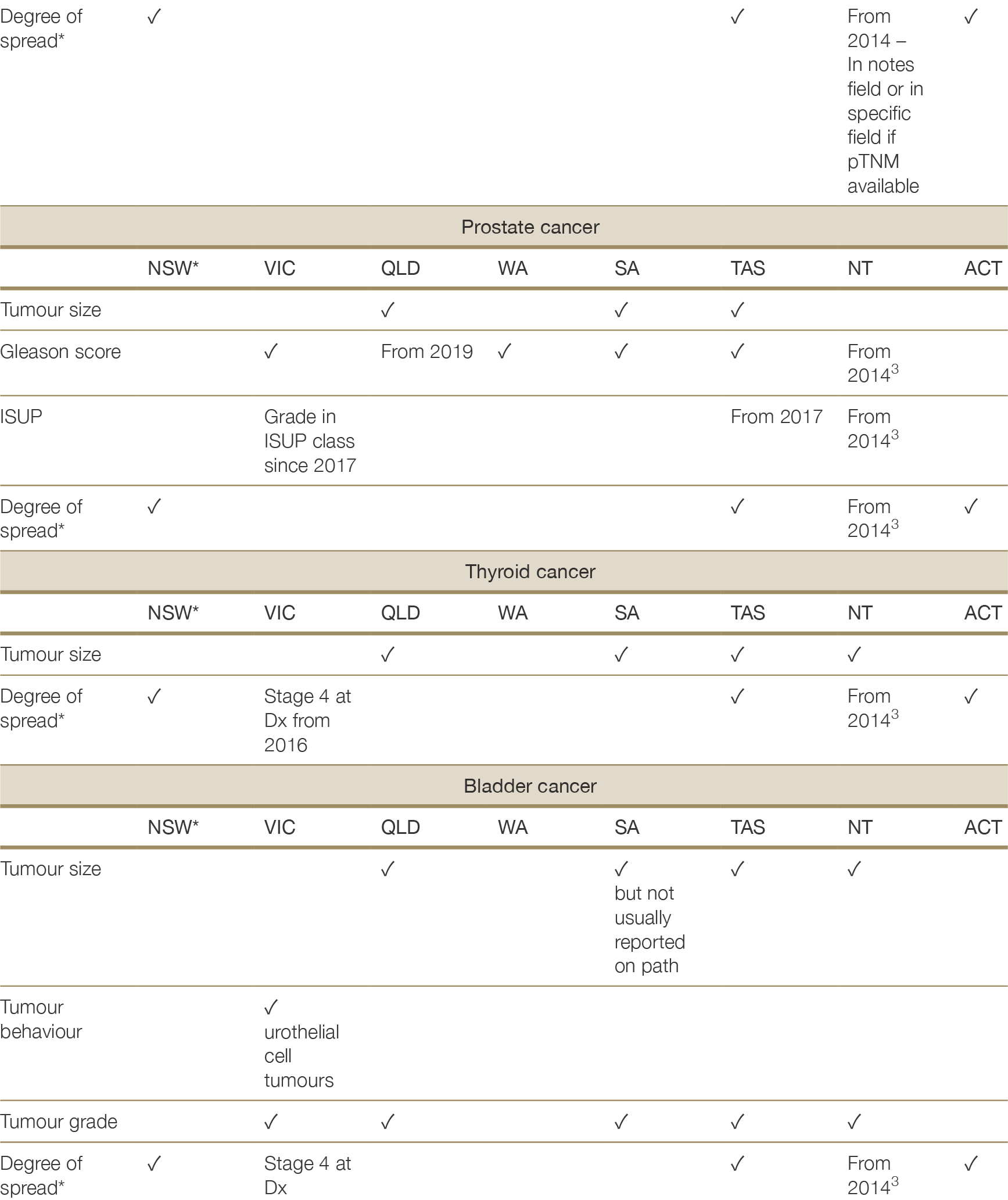
* A lot of information is captured on the pathology report, the inpatient notification (surgical) or on the radiotherapy/ chemotherapy treatment notification, which may not be explicitly listed in a data field.
1 VCR is receiving some notifications (hospital and Path reports) for SCC and BCC of skin. VCR may provide incomplete data on such cases. Notifications for SCC of skin for C445, C510-C519, C600-C609, C632 (anogenital area) only. 1 No reference text available.×
2 Anogenital area refers BCC/SCC of anus, perineum, perianal area, labia, vulva, penis, or scrotum. 2 No reference text available.×
3 Documented in notes field. Nodal and metastatic status documented in notes field or in specific field if pTNM available. 3 No reference text available.×
New Zealand
The New Zealand Cancer Registry (NZCR) captures all primary malignant tumours (invasive and in situ) first diagnosed in New Zealand, excluding squamous and basal cell skin cancers unless they arise in the skin of the genitalia. The NZCR was originally established in 1948, with coverage increasing after the passage of the Cancer Act in 1993. As of March 2023, Organ Donation New Zealand and the NZCR are in the process of establishing a protocol for health professionals to access the registry at the time of donor evaluation.
The NZCR is “case-based”, with each piece of information provided to the registry considered in the context of other information about the same person and used to progressively create a complete picture of tumours for that person. Cases are generally identified by Name, Sex, and NHI number. In addition to the data specified in Table L3, the NZCR captures clinical notes – a text field with supplementary information on the cancer registration – from 2001 onwards. The NZCR does not collect treatment information.
Table L3: Cancer-specific information available in the New Zealand Cancer Registry
